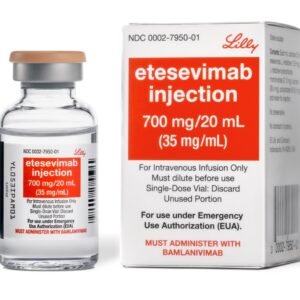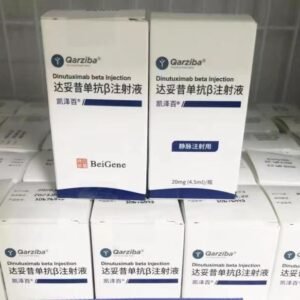Semaglutide Injection ;
Effects and efficacy:
Semaglutide injection can be used for blood sugar control in adult patients with type 2 diabetes who are receiving metformin and/or sulfonylurea drugs and whose blood sugar levels do not meet the target on the basis of diet control and exercise. It is suitable for reducing the risk of major adverse cardiovascular events (cardiovascular death, non-fatal myocardial infarction or non-fatal stroke) in adult patients with type 2 diabetes with cardiovascular disease.
Usage and dosage:
Usage This product should be injected once a week and can be injected at any time of the day without taking it according to mealtime. This product is administered by subcutaneous injection, and the injection site can be the abdomen, thigh or upper arm. No dose adjustment is required when the injection site is changed. This product cannot be injected intravenously or intramuscularly. If necessary, the date of weekly administration can be changed as long as the interval between the two doses is at least 2 days (>48 hours). After selecting a new administration time, it should continue to be administered once a week. Dosage The starting dose of semaglutide is 0.25 mg once a week. After 4 weeks, it should be increased to 0.5 mg once a week. After at least 4 weeks of treatment at 0.5 mg once a week, the dose can be increased to 1 mg once a week to further improve blood sugar control. 0.25 mg of this product is not a maintenance dose. It is not recommended to exceed 1 mg per week. When semaglutide is used in combination with existing metformin, the current dose of metformin can be maintained unchanged. When this product is used in combination with existing sulfonylureas, the dose of sulfonylureas should be reduced to reduce the risk of hypoglycemia. Self-monitoring of blood sugar is not required to adjust the dose of this product. However, when starting to use this product in combination with sulfonylureas, self-monitoring of blood sugar may be required to adjust the dose of sulfonylureas to reduce the risk of hypoglycemia.
Adverse reactions:
Hypoglycemia: No severe hypoglycemia events were observed when this product was used as a monotherapy. Gastrointestinal adverse reactions: Gastrointestinal adverse reactions, including nausea, vomiting and diarrhea, were observed during treatment with this product. Most events were mild to moderate in severity and short in duration. Acute pancreatitis: In the Phase IIIa trial, the incidence of adjudicated acute pancreatitis was 0.3% and 0.2% in the semaglutide group and the control group, respectively. In the 2-year cardiovascular outcomes trial, the incidence of adjudicated acute pancreatitis was 0.5% and 0.6% in the semaglutide group and the placebo group, respectively. Complications of diabetic retinopathy: Rapid improvement in glycemic control is associated with transient worsening of diabetic retinopathy. Injection site reactions: Injection site reactions (such as injection site rash, erythema) have been reported, and these reactions are usually mild. Immunogenicity: The proportion of patients who tested positive for anti-semaglutide antibodies at any time point after baseline was very low (1-2%), and no patients developed anti-semaglutide neutralizing antibodies or anti-semaglutide antibodies with endogenous GLP-1 neutralizing effects at the end of the trial. Increased heart rate: In subjects treated with this product in the Phase IIIa trial, an average heart rate increase of 1 to 6 beats per minute was observed.
Drug contraindications:
Allergy to this product is contraindicated during pregnancy
Share:
Products
Our offers
Health Classification
Let us work together to protect precious health



























